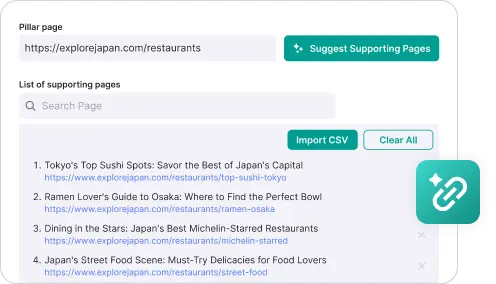Content Silo
Easily build interlinked content silos with automated internal linking to build topical authority and improve your rankings.
Get LinkVector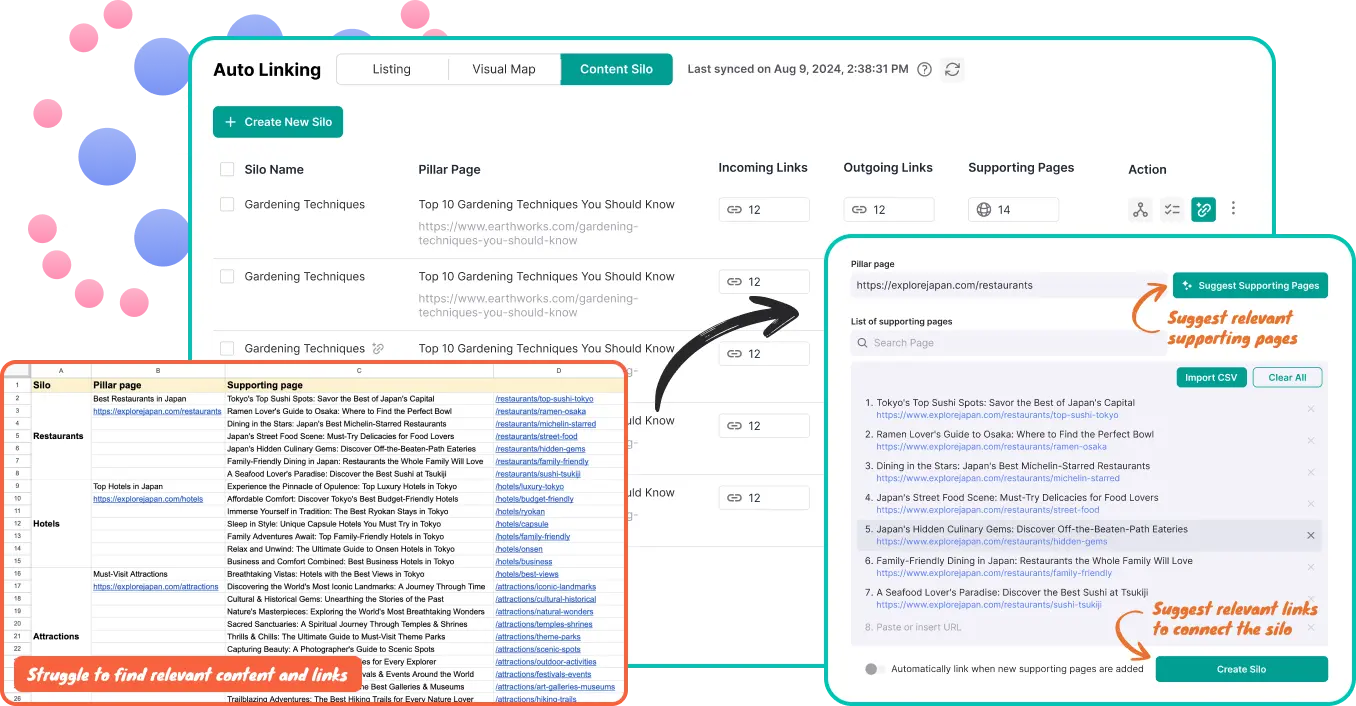
CONTENT SILO
All you need to do is choose a pillar page,
and we’ll handle the rest
Based on your pillar page, LinkVector will automatically build your silo through the following process:
STEP 1:
Identify supporting pages
Analyze your website for relevant pages to support your pillar page.

STEP 2:
Automatically interlink the silo
Link to the pillar page
Add links from your supporting pages to the pillar page.
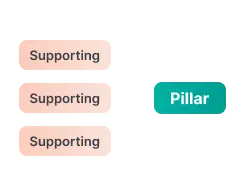
Link from the pillar page
Add links from your pillar page to the supporting pages.
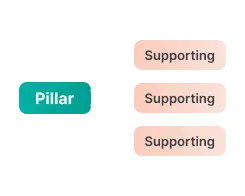
Cross-link supporting pages
Interlink related supporting pages with each other.

Write new paragraph
Generate a new paragraph to naturally integrate a link when there’s no suitable anchor text available.
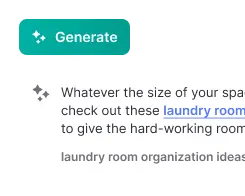
Building content silos has never been this easy or fast
Get supporting page suggestions
We’ll find and suggest pages that are relevant to the pillar page so you don’t have to waste time looking for suitable supporting pages.

Auto-link pages in content silo
We identify and suggest internal linking opportunities between the pillar page and supporting pages which you can apply in a single click.

Add a new paragraph for anchor text
When there’s no appropriate anchor text in your existing content, we’ll generate a new contextually-relevant paragraph that can seamlessly incorporate a link.

Visualize your content silo
View your content silo in the Visual Map to see how your content is interconnected to identify further optimization opportunities.

Expand silos by adding new pages anytime
Add new supporting pages to your content silos anytime you want. Links will automatically be created between the pillar page and the new supporting pages.

You’re not just building content silos.
You’re also building topical authority for higher rankings.

Boost rankings of valuable content
Improve the rankings of your most important pages by designating them as pillar pages, ensuring they receive more link equity and visibility.

Establish your site as the expert
Showcase your website’s comprehensive coverage of topics through content silos, reinforcing your topical authority and credibility with Google.

Optimize link equity distribution
Strategic internal linking between the pillar and supporting pages effectively distributes link equity across your site, boosting the authority of all interconnected pages.
"With just a few clicks, we've effortlessly created intricate topic clusters that neatly organize our clients’ website’s content. The automated process of finding relevant cluster pages, interlinking them, and visualizing the entire structure is amazing. We’re already seeing an uptick in our clients’ rankings and traffic! The Content Silo tool is a game-changer.”
- Judy Groth, Agency CEO
Why LinkVector
Precise
Benefit from precise internal linking that seamlessly connects your relevant pages, enhancing navigation and SEO.
Safe
Easily revert any changes, and rest assured that your links remain intact even if you stop using LinkVector.
Results-Driven
Implement improvements that deliver tangible results in boosting your website's performance.
Trust
Rely on data and suggestions grounded in credible sources like Google for accurate optimization.
User-Centric
Optimization of your content and links heavily focus on ensuring good user experience.
We've built a proprietary technology that meets the precision required for internal linking through in-depth research and rigorous testing.

Get started with LinkVector in 3 steps



STEP 1
Connect your site
STEP 2
Apply the suggestions from LinkVector
STEP 3
